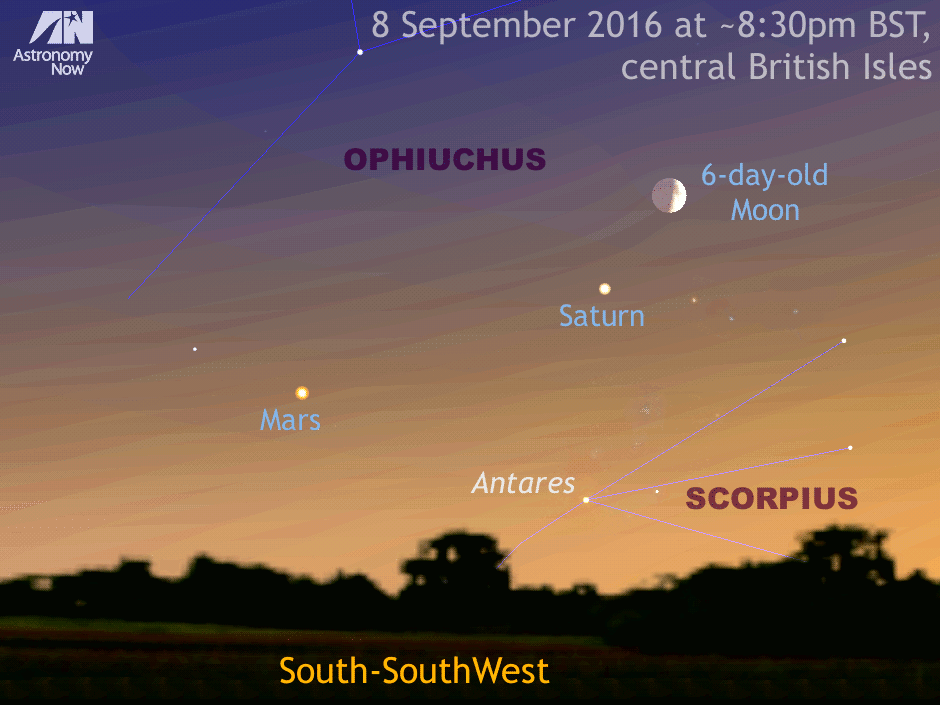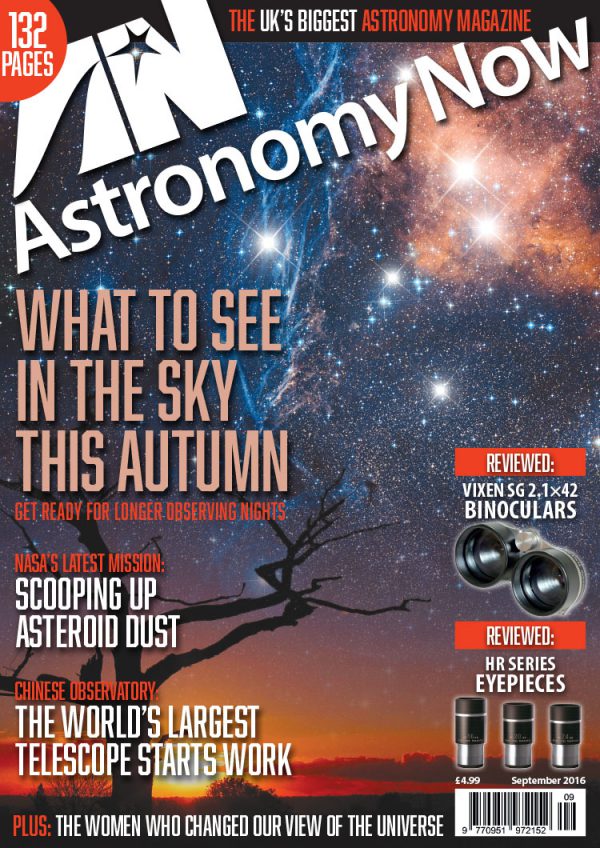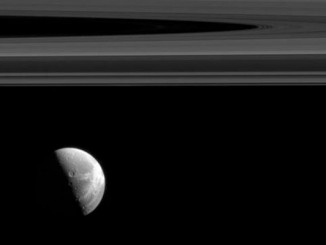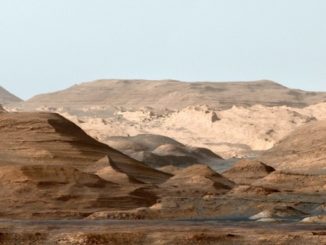
The gulf between Earth and Mars is currently 88 million miles (141 million kilometres). The Red Planet’s prograde (west to east) motion of almost 0.6 degrees/day against the stars of Ophiuchus is noticeable from night to night in the animation above, hence it’s drawing away from Saturn as the nights pass.
Magnitude +0.5 Saturn also lies in the constellation of Ophiuchus, currently some 9½ degrees (the span of a fist held at arm’s length) above and to the right of Mars. At this time Saturn lies 939 million miles (1,511 million kilometres) from Earth — in excess of ten times farther away than adjacent Mars.
Despite its great distance, Saturn’s globe still subtends 16½ arcseconds, while the northern face of the glorious 37-arcsecond-wide ring system is tipped a very favourable 26 degrees toward Earth, but the poor seeing owing to the planet’s very low altitude as seen from the British Isles is going to make it difficult to see any detail in a telescope.
As seen from the heart of the UK, Saturn reaches a peak altitude of 16 degrees in the south at sunset; Mars transits just half an hour later at an altitude of barely 11 degrees. By the the time the evening twilight has faded sufficiently to see them — about an hour after sunset — Saturn and Mars lie just ten and eight degrees high, respectively, in the south-southwest.
Inside the magazine
For a comprehensive guide to observing all that is happening in the September sky tailored to Western Europe, North America and Australasia, obtain a copy of the September 2016 edition of Astronomy Now.
Never miss an issue by subscribing to the UK’s biggest astronomy magazine. Also available for iPad/iPhone and Android devices.




